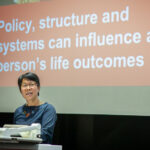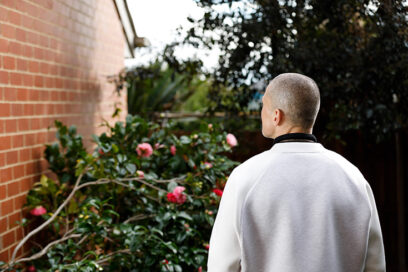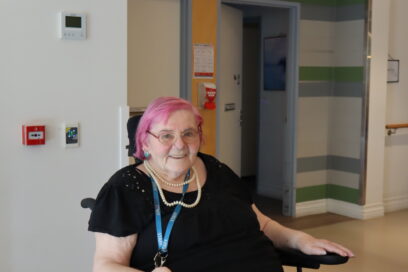As we globally grapple with COVID-19 Sacred Heart Mission has released further research proving its innovative ‘housing-first’ model could be the golden opportunity to eradicate homelessness, during a time when it is more important than ever to keep people sleeping rough off the streets and safe in a home.
For too long, homelessness has been seen as an intractable problem but COVID-19, which has placed extra pressure on stretched homelessness service providers, has shown how the government can work with homelessness service providers and shift hundreds of people sleeping rough into emergency accommodation.
Now, we have a rare opportunity to reach out to people who finally have an address, who are often unseen and invisible, and to make a real difference by moving them into permanent housing, with support, and ensure they exit out of homelessnessn once and for all.
It will only be possible if we can appropriately support people to transition to, and then maintain, a long-term tenancy, which is something Sacred Heart Mission has been doing successfully, for more than 10 years through its Journey to Social Inclusion program.
J2SI Phase Two: ‘Everybody needs a home’
During Homelessness Week 2020, which aims to explore why ‘everybody needs a home’, Sacred Heart Mission has launched its J2SI Phase Two final-year reports proving once again how housing people first and working with notoriously ‘hard-to-reach’ people over three years, instead of three months, is an effective way to solve long-term homelessness.
Back in 2016, Sacred Heart Mission extended its J2SI program to 62 people in multiple locations across Melbourne after running a successful pilot from 2009-12 with 40 participants in the inner south of Melbourne. When Sacred Heart Mission started working with Phase Two participants, 93 per cent had experienced chronic homelessness and were homeless at referral. A further seven per cent reported they were in housing, but at immediate risk of homelessness with a history of chronic homelessness.
Simple put, J2SI helps people who have experienced long-term homelessness to live the life they’ve dreamed of; a comfortable place of their own, job and volunteering opportunities, friendships, neighbours and a support network. Things we often take for granted.
Fast forward three years and Sacred Heart Mission has backed this assertion; nearly all of the people who participated in Phase Two of the program, 82.5 per cent in fact (Sacred Heart Mission data), were housed at the end of the three-year program. J2SI participants also saw improved mental health, increased employment, and reduced substance use.
There was also a large reduction in the use of public services such as hospitals and drug and alcohol services, which created significant cost savings to the government (detailed below).
J2SI: an evidence-based model, independently evaluated
Sacred Heart Mission has been developing, piloting, modifying, evaluating and scaling J2SI for more than 10 years. This has been achieved through extensive research by Sacred Heart Mission and others on the causes and consequences of homelessness in Australia, and continuous improvement to learn and test interventions that effectively enable people to escape the cycle of chronic homelessness.
The Centre for Social Impact, University of Western Australia and Swinburne University of Technology conducted the impact and economic evaluations by benchmarking outcomes for J2SI participants against a group using existing services.
In the Phase Two final-year evaluation, led by Professor Paul Flatau, Director of the Centre for Social Impact, University of Western Australia and released in August 2020, the outcomes for the two groups were compared at the end of the study.
Phase Two: final-year outcomes
Intensive support and case management is provided to improve all areas of people’s lives. This includes help to get and stay in housing, improving mental health and wellbeing, resolving drug and alcohol issues, building skills, increasing connection with the community and contributing to society through economic and social inclusion activity.
Evaluation findings, from the recently released research at the end of the three-year J2SI program include:
Housing
- 82.5% of J2SI participants were housed at the end of the program (Sacred Heart Mission data)
- More J2SI participants were in housing (62.2%) than the comparison group (28.3%) in the final survey (Note: 37 J2SI participants completed the final survey)
- 40.5% of J2SI participants felt safe in their housing “all of the time”; three times the number at the beginning of the study.
Health and wellbeing
- Self-reported depression, anxiety and stress reduced for J2SI participants
- J2SI participants reported a reduction in illicit substance use from 86.5% at the start to 64.9% at the end of the program
- Nights spent in drug and alcohol rehabilitation decreased to an average of 3.62 nights (in the 12 months prior to the final survey) from 10.73 nights (in the year prior to Baseline).
Justice and economic participation
- More J2SI participants reported participating in the labour force (employed or looking for work) than the comparison group
- J2SI participants reported that they were stopped by police an average of 2.38 times (in the 12 months prior to the final survey) compared to 5.75 times for the control group.
Cost benefit analysis
- Mean health services costs (for the 12 months prior to the final survey) were lower for J2SI participants ($20,656) than the comparison group ($26,738)
- Mean justice service costs (for the previous 12 months) were lower for J2SI participants ($5,515) than the comparison group ($7,386)
- For every $1 invested in the J2SI program, $1.84 is returned in health and justice cost savings compared to the comparison group.
Adopting our ‘housing-first’ model nationally via the J2SI Evaluation and Learning Centre
Phase Two showed promising results and the learnings will be used to help strengthen J2SI to support more people into stable housing and help end chronic homelessness. Sacred Heart Mission wishes to continuously improve the program and enable J2SI to be run nationally.
With increased ‘reach and scale’ Sacred Heart Mission can create a greater impact on this complex social issue. Sacred Heart Mission’s vision will see J2SI expanded nationally through licensing agreements with other community service organisations across multiple services sites in Australia. This will ensure that program fidelity is retained , we make continuous improvements to the design of the intervention l and allow economies of scale to develop.
A J2SI Evaluation and Learning Centre has been established to manage the partnerships, licensing, evaluation and continuous improvement of the model. It will gather, analyse and disseminate evidence of the impact of J2SI in achieving an end to chronic homelessness.
How can we take action to end homelessness?
This research shows how essential supportive housing programs such as J2SI are, to ending a person’s chronic homelessness permanently. J2SI could be scaled nationally to respond to the thousands of people experiencing long term homelessness.
All housing problems are connected. Renters, home-buyers, people struggling to find a safe roof over their heads to isolate and stay at home during a pandemic – in a health crisis, what happens to one of us, affects everybody.
Housing people with appropriate support helps end homelessness, which J2SI research has proven. Collectively, we need to make our voices heard by the government to take a stand to help 116,000 people who are sleeping rough on any night in Australia. We need programs such as J2SI and we need more housing.














